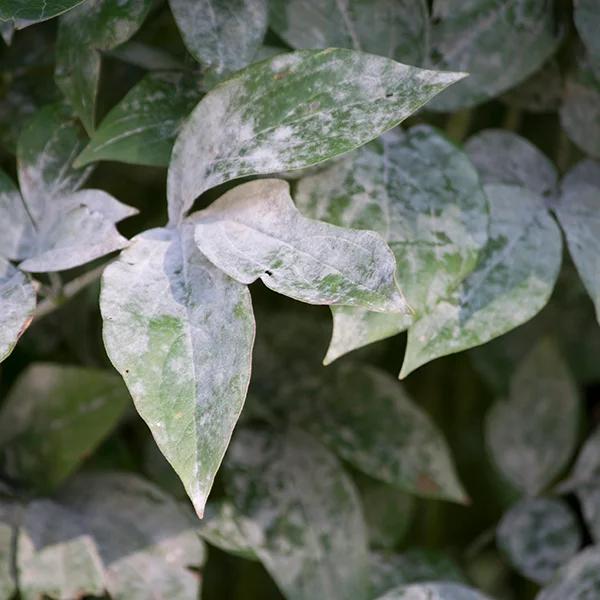What is this White Fungus on my Trees and Hedges?
Powdery Mildew is caused by a group of fungi that form a grey-white coating on leaves.
Sometimes it’s so thick that it looks like the leaves were spray-painted, and sometimes it’s hard to see the fungus itself, only the damage it causes.

Powdery Mildew can affect most trees and hedges; some of the most common victims are hawthorn, field maple, roses many perennials, fruit trees and fruit bushes.
What Causes Powdery Mildew?
Mildew mainly attacks plants that are stressed by dry soil, so mildew in hot dry weather is best treated with a good watering to the base of the plants, not with a sprinkler.
Mildew is worse where air movement is poor. This is why it’s more common on climbing roses, sheltered against a wall, than bush roses out in the open.
By the same token, mildew affects thick, well trimmed native hedging.
Powdery Mildew Treatment
Mildew is not a serious condition and is not worth treating with fungicide on ornamental plants.
- Mulch well in Spring to prevent plants from drying out in Summer.
- Remember that mulch does not need to be decayed, so things like fresh grass clippings are fine. Well rotted compost or manure is best for hungry plants because it releases nutrients immediately, but it is not necessary: soil moisture is the most important thing.
- Prune and trim to remove affected parts of the plant, and to improve airflow.
Mildew can ruin your crops, in which case use any fungicide suitable for edible plants: there will be 4 or 5 brands on sale in your local garden centre.
With vegetables, try other, more disease resistant varieties the following year.
Natural Fungicide Sprays
Mildew is sensitive to a range of home remedies:
- Baking soda
- Neem oil
- Milk
- Vinegar
Powdery Mildew VS Downy Mildew
Although broadly similar in effect and treatement, the true fungus powdery mildew is distinct from downy mildew, which is actually a fungus like water mold:
- Appearance:
- Powdery Mildew: White, powdery coating on all sides of the leaves, often forming circular spots.
- Downy Mildew: Fuzzy, white to grayish growth mainly on the underside of leaves, with yellowish spots on the upper surface.
- Environmental Preferences:
- Powdery Mildew: Thrives in warm, dry conditions with high humidity.
- Downy Mildew: Prefers cool, moist conditions.
